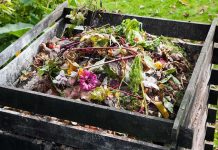
A widespread outbreak of deadly flesh-eating bacteria linked to popular Louisiana oysters is raising urgent questions about food safety and government oversight, while families mourn and industries brace for economic fallout.
Story Snapshot
- Contaminated oysters have killed two and infected dozens across Louisiana and Florida.
- Health officials confirm a sharp rise in Vibrio vulnificus cases compared to previous years.
- Public warnings and investigations are underway to track the source and prevent further deaths.
- The outbreak exposes vulnerabilities in seafood safety and interstate regulation.
Fatal Outbreak Traced to Louisiana Oysters
In early and mid-2025, health departments in Louisiana and Florida reported a surge of Vibrio vulnificus infections, a flesh-eating bacterium notorious for its rapid spread and high mortality. Both confirmed deaths were traced to Louisiana-harvested oysters served in restaurants, while dozens more fell ill across state lines. The Louisiana Department of Health issued a formal advisory on July 31, urging caution and highlighting the significant rise in cases and fatalities compared to previous annual averages. This outbreak has placed the seafood industry and regulators under immense scrutiny as public concern intensifies.
Background: Vibrio vulnificus and Gulf Coast Risks
Vibrio vulnificus is a naturally occurring bacterium found in warm coastal waters, especially prevalent from May to October. The Gulf Coast, home to major oyster farms, offers the perfect environment for both oyster cultivation and bacterial proliferation. As coastal waters warm, concentrations of the bacteria increase, raising threats for anyone consuming raw or undercooked oysters. Historically, Louisiana averaged seven cases and one death per year, but the 2025 outbreak far exceeds these figures, marking a significant escalation in both infections and fatalities.
Public Health Response and Investigation
State health departments in Louisiana and Florida have ramped up efforts to monitor cases, issue advisories, and investigate the contamination source. The Centers for Disease Control and Prevention (CDC) is coordinating a multi-state response, providing updated guidance and surveillance data. Public health warnings now advise not only caution regarding raw oyster consumption but also protective measures for open wounds exposed to coastal waters. The seafood industry, facing decreased consumer confidence and potential regulatory actions, is cooperating with authorities to trace supply chains and enhance safety protocols.
Official statements from the Louisiana Department of Health on July 31 and ongoing CDC updates emphasize the need for heightened awareness and preventive action. Investigations continue as additional deaths and infections are confirmed, with the total count reaching six in Louisiana and five in Florida. Media coverage has intensified, reflecting widespread anxiety and calls for government intervention to prevent further tragedies.
Economic and Social Impacts
The outbreak has immediate implications for consumers, especially families who rely on seafood as a dietary staple. Beyond health risks, the economic toll on the oyster industry is mounting as demand drops and potential recalls loom. Restaurants, distributors, and harvesters face uncertainty, while healthcare systems strain to manage severe bacterial infections. Social anxiety is growing, fueled by questions over food safety standards and government oversight. Political pressure on agencies and regulators is building, with calls for stricter guidelines and more rigorous testing in oyster harvesting and distribution.
Two dead after contracting flesh-eating bacteria from popular seafood product as dozens infected across multiple states https://t.co/sdkzxVkocH
— Daily Mail (@DailyMail) August 29, 2025
Long-term, stricter regulations and increased investment in monitoring may reshape the seafood sector. The heightened risk and visibility of this outbreak could change consumer habits and industry practices, especially if further cases emerge. Communities in Louisiana and Florida remain on alert as the tracking and response effort continues.
Expert Perspectives and Credible Analysis
Medical experts such as Dr. Andrew Handel stress the severity of Vibrio vulnificus infections, noting the importance of public education and swift medical intervention. Health officials advise strict adherence to seafood safety practices, especially for vulnerable populations. The CDC and state agencies provide evidence-based recommendations, while industry representatives maintain that severe cases remain rare relative to overall oyster consumption. Nonetheless, the consistency of data and advisories among official sources underscores the seriousness of the threat and the necessity for improved safeguards.
Sources:
Contaminated Oysters Spread Fatal Flesh-Eating Bacteria in Two States
Louisiana Department of Health: Vibrio vulnificus 2025
Florida Department of Health: Vibrio vulnificus Information














